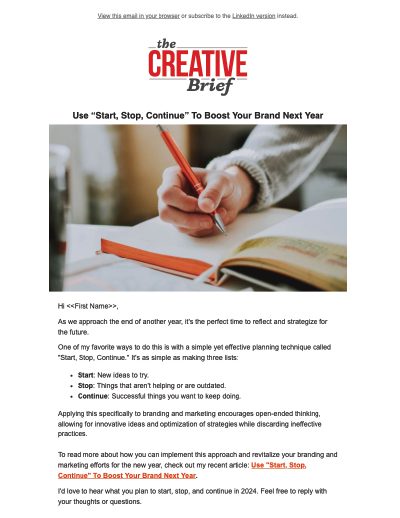10 Branding Mistakes Your Small Business is Making.
When you think about great branding, Coca Cola’s distinctive red and white lettering, Nike’s swoosh and Adidas’s three stripes likely come to mind. But as a small business, imagining the level of investment that’s gone into these iconic images can make the thought of undertaking your own branding initiative seem overwhelming.
It’s actually easier to do than most imagine. Just make sure to avoid some common pitfalls and branding mistakes.
1. Not understanding the power of a brand. From a customer-relationship perspective, having a strong brand is obviously advantageous. For instance, when people think of online shoe purchases, they think of Zappos. You want to have that kind of immediate, definitive relationship with your buyers as well.
Defining your brand is also valuable from an SEO perspective. It’s something of an open secret that Google likes to prioritize branded listings in its organic search results, since visitors are more likely to click on them. More clicks tends to equal happier customers, which means that focusing on brand building could lead to unexpected website traffic and awareness benefits.
2. Forgetting to establish defined brand guidelines. So you know that your company may need to develop a brand, but what exactly does that mean? When creating a brand identity, you’ll want to establish defined guidelines that cover all of the following elements (as well as any others that are relevant to your field). Here are a few points to consider.
- Logo (both an overarching logo and any logo lockups your company uses for individual product lines)
- Brand colors
- Taglines
- Fonts and typography
- The “voice” used in your branded materials
- Imagery
- Mascots and spokespeople
Clearly, this list isn’t comprehensive. If there’s some other branding characteristic you feel is necessary to define your business, go ahead and add it to your brand guidelines documentation. The worst thing you could do is to avoid creating these important documents altogether. Without them, your branding efforts will lack the consistency and direction needed for success.
3. Overcomplicating your brand. Take a look at how Coca Cola’s classic script logo has changed since its first usage in 1887. While the fonts used have varied slightly, the original look is still largely intact after more than 127 years of service.
Small businesses can learn a lesson from this beverage industry giant. When initiating the branding process, it can be tempting to add more variables than you truly need. But your logo doesn’t need to involve six different colors, and it doesn’t need to have six individual graphic elements to represent the different arms of your company. Clean, simple elements are more likely to be recognized and remembered by consumers, so steer clear of overcomplicating your company’s branded elements.
4. Falling into the vague branding trap. But then again, don’t go the opposite direction and develop brand guidelines and elements that reveal nothing about your company and its value proposition. Chances are you’ve seen this before in generic logos or in marketing language that’s downright repetitive. For example “best-selling” books, “championship” golf courses and “award-winning” ad agencies really don’t mean anything.
So what’s the solution? Clear language, logos and imagery. For a great example, take a look at mobile-payment processor Square’s landing page. Not only does the company’s logo mimic the product in a way that’s unmistakable, the value proposition stated in the company’s tagline “Start accepting credit cards today” is clear.
5. “Cheating” on your brand guidelines. So you’ve sat down, crafted careful brand guidelines and begun implementing them across all of your company’s marketing materials and online properties. But two months down the road, you need to create a new ad for a product line you’re launching, and it’d be really great if you could use a few colors outside of the palette you specified out in your branding documentation.
Can you do it? Of course you can. But keep in mind, every time you deviate from your stated brand guidelines, you dilute their power by some small amount. By doing so, you’re essentially introducing a new brand image to your customers, diminishing the strength of the association they’d have to a more unified branding campaign.
6. Not policing your brand’s usage. Developing and implementing your small business’s brand guidelines is only half the battle. In addition, you’ve got to be proactive about monitoring where and how others are using your branded elements on your behalf. If not, you could have competitors creating a logo that looks similar, a review website using your logo and not linking back or a partner publishing an ad featuring your logo but with the wrong colors.
Some of these issues may be minor, but in other situations, it may be necessary to pursue legal action if you feel your branded elements are being infringed upon.
7. Rolling out brand changes poorly. There’s nothing wrong with rebranding. That is, unless you approach it poorly. Bear in mind any changes you make to your established brand reduces the connection you’ve built with your customers. Therefore, it’s important to only make changes when the benefits truly outweigh the risks of losing business. If you do decide to make an alteration, you need to clearly educate your followers on the changes you’re making.
While branding is certainly a marketing discipline in its own right, it doesn’t need to be overcomplicated. Good intentions – and avoidance of the mistakes described above – will go a long way towards helping your small business form vital connections with your target customers.
8. Prohibiting Employees From Building Brand. Social media has a positive correlation to employee satisfaction; however, many small businesses continue to hold a tight grip on their social media accounts and posting strategy. About 50% of employees are blocked from accessing Facebook at a workplace.
The truth, in fact, is that we are at war for the best talent. In a socially connected world, your employees can be the champions of your product and company. We are forgetting when we used to worry about employees using email and phones, which are now workplace mainstays. The new tactic is to let them use social media as long as it is being used for the benefit of the company.
People today trust person-to-person communication and tend to ignore direct advertising by brands. Thus, personal consulting takes priority over corporate communications. By letting your employees be on social media, you are initiating a fleet of small personal brands to help in your business branding.
As with emails and phones, the time for social media has come. Instead of seeing social media in the workplace as a threat, train your employees to be social media brand ambassadors and set them loose on the internet.
9. Not recognizing the importance of customer service. Nordstrom sells upper-end clothing but the department store giant isn’t known for what they sell, but how they sell it. But more directly, it’s that they are customer service companies first and retailers second. It’s the core of their business and as a result of positive customer experiences (and customer’s desire to share those positive experiences), it their brand. It’s what they’re known for delivering better than their competitors. Every time and through every interaction. Employees in turn, live the brand.
8. Making the story about yourself. Your brand exists because customers are willing to purchase it. Successful brands enable their customers; whether it is to get them to where they want to go, to look the way they want to look or simply, to get something done. The success of the brand is about how it addresses your customer’s needs. Their experience with you. If it is possible, it becomes about they’re loyalty to your brand. The most successful modern brands craft their story not on how vital (or cool or funny) they are to the customer but rather how the customer uses or engages with the brand in order to make their lives better.
Bonus mistake. Playing the short game. As a discipline, branding is an extended effort which requires the long view. Rather than swinging for the fences, the most effective branding is about rounding the bases on consistent singles and doubles. It’s about the sum of many small brush strokes to ll the larger canvas. Metaphors aside, the most successful branding is the result of countless smaller, strategic efforts intended to position a brand to prepared to go big, but only if and when the proper groundwork has been laid.



